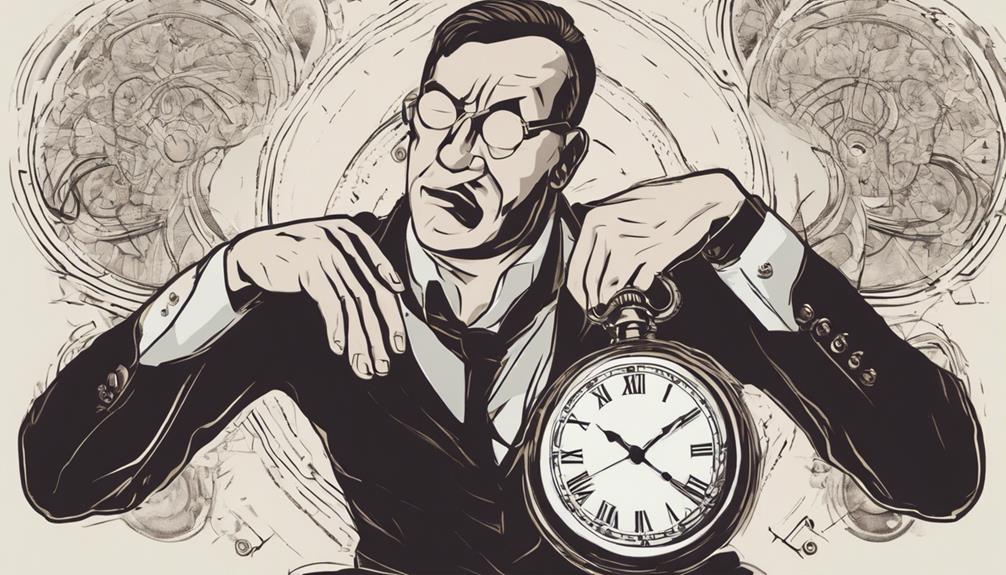For fast hypnotic induction, prepare by creating a relaxing environment and using visualization and deep breathing exercises. Direct suggestions, such as suggestibility testing and embedding positive affirmations, can deepen the trance state quickly. Visualization techniques like vivid imagery and immersive experiences enhance receptiveness. Building rapport with subjects through trust and effective communication is key. Smoothly inducing a trance state involves guiding relaxation, using rapid induction techniques, and fostering a supportive environment. Tailored scripts and strategic methods can greatly impact the effectiveness of rapid hypnosis. Mastering these practices can lead to successful outcomes in hypnotic inductions.
Pre-Induction Preparation

Before beginning the hypnotic induction process, it is essential to ensure that both the hypnotist and the subject are in a comfortable and conducive environment for relaxation and focus. This sets the stage for a successful hypnosis session.
To facilitate this, visualization exercises can be utilized to help the subject mentally prepare for the experience. Guiding the subject to envision a peaceful place or scenario can assist in calming the mind and promoting a sense of tranquility.
Incorporating relaxation techniques such as deep breathing exercises can further aid in creating a state of relaxation. Encouraging the subject to take slow, deep breaths can help reduce anxiety and tension, allowing them to enter a more receptive state.
Additionally, progressive muscle relaxation can be beneficial in releasing physical stress and promoting a sense of ease. By focusing on tensing and then relaxing different muscle groups, the subject can enhance their overall relaxation experience.
Utilizing Direct Suggestions
To enhance the effectiveness of the hypnotic induction process, direct suggestions can be strategically utilized to guide the subject into a deep state of trance. Suggestibility testing is a valuable tool in determining the responsiveness of the individual to hypnosis. By using suggestibility tests, such as eye fixation or hand levitation, the hypnotist can tailor their approach to suit the subject's unique needs, ensuring a more successful induction.
Deepening techniques are then employed to deepen the trance state once the subject is responsive to suggestions. Techniques like progressive relaxation or counting down can help intensify relaxation and focus, leading the individual into a deeper level of hypnosis where subconscious reprogramming can take place effectively.
Subconscious reprogramming involves embedding positive suggestions or affirmations into the subconscious mind during the hypnotic state. These suggestions can target specific behaviors, beliefs, or goals that the individual seeks to address.
Additionally, post-hypnotic suggestions can be given to reinforce the desired changes once the hypnosis session has ended, further solidifying the impact of the hypnotic experience.
Incorporating Visualization Techniques

One effective method to deepen the hypnotic experience is through the incorporation of visualization techniques that engage the subject's imagination and enhance their receptiveness to suggestions. Visual imagery plays a crucial role in guiding individuals into a state of heightened focus and suggestibility during hypnosis. By incorporating vivid visualizations into hypnotic scripts, practitioners can help individuals create mental images that align with the desired outcomes of the session.
Relaxation techniques are often intertwined with visualizations to further enhance the hypnotic experience. Encouraging the subject to imagine themselves in a peaceful setting or visualizing a sense of calm washing over them can induce a state of relaxation that is conducive to deeper hypnotic states. These techniques not only aid in relaxation but also pave the way for the subject to be more open to the suggestions being provided.
Incorporating visual imagery and relaxation techniques into hypnotic scripts can create a powerful and immersive experience, allowing individuals to tap into their subconscious minds more effectively. By engaging the subject's imagination and promoting a sense of calm, practitioners can facilitate rapid induction and enhance the overall effectiveness of the hypnotic session.
Establishing Rapport With the Subject
Creating a strong connection is vital in establishing rapport with the subject during a hypnotic session. Building trust is the foundation of this connection, fostering an environment where the subject feels safe and comfortable. Effective communication plays a crucial role in building this trust. It involves active listening, empathy, and clear articulation of thoughts and intentions.
To establish rapport, it is essential to show genuine interest in the subject's well-being and goals. This can be achieved by asking open-ended questions, actively engaging in conversations, and demonstrating empathy towards their experiences. Non-verbal cues such as maintaining eye contact, nodding in understanding, and mirroring body language can also enhance rapport building.
The subject should feel heard, understood, and respected throughout the interaction. This paves the way for a smoother hypnotic induction process as the subject becomes more receptive and open to suggestions. By prioritizing trust-building and effective communication, the hypnotist can create a strong rapport with the subject, laying a solid foundation for a successful hypnotic session.
Inducing Trance State Smoothly

Establishing a calming environment and guiding the subject through relaxation techniques are key elements in smoothly inducing a trance state. Deep relaxation is crucial in preparing the mind for hypnotic suggestion. By helping the subject achieve a state of deep relaxation, it becomes easier to bypass the critical conscious mind and access the subconscious. Techniques such as progressive muscle relaxation, deep breathing exercises, and visualization can aid in achieving this profound state of calmness.
When aiming for rapid induction, it is essential to streamline the process while ensuring the subject feels safe and comfortable. Rapid induction techniques like eye fixation, confusion techniques, or instant inductions can be effective in swiftly bringing about a trance state. However, it is important to approach these methods with care, ensuring that the subject is prepared and receptive to the hypnotic experience.
Creating a smooth transition into the trance state requires sensitivity to the subject's needs and responses. By fostering a supportive and trusting environment, the induction process can be both efficient and gentle, leading to a successful hypnotic session.
Frequently Asked Questions
Can Rapid Inductions Be Used for Therapeutic Purposes?
Rapid inductions can offer therapeutic benefits by quickly accessing the subconscious mind. However, drawbacks include potential emotional overwhelm or resistance. Ethical considerations involve ensuring client consent and safety. Effectiveness varies based on individual responsiveness and skill of the hypnotist.
Are There Risks Associated With Rapid Hypnotic Inductions?
When considering rapid hypnotic inductions, it's crucial to acknowledge potential dangers and ethical concerns. Safety precautions should always be in place, alongside thorough informed consent procedures, to ensure the well-being of individuals undergoing hypnosis.
How Can I Tell if Someone Is Highly Suggestible?
Assessing suggestibility involves observing responses to cues like eye fixation and body language. Hypnotic susceptibility can be gauged through suggestibility scales or simple tests like the hand-clasp method. Recognizing these signs aids in tailoring effective hypnotic interventions.
Can Rapid Inductions Work on Skeptics or Resistant Individuals?
When working with skeptics or resistant individuals, rapid inductions can still be effective. Through skillful application of hypnotic techniques, skepticism can be addressed, and resistance can be overcome, leading to successful inductions.
Is It Possible to Reverse the Effects of a Rapid Induction Quickly?
When exploring the possibility of quick reversal in hypnosis, it's essential to consider alternative techniques that can gently guide individuals out of a hypnotic state. These methods should prioritize safety, comfort, and respect for the individual's experience.
Conclusion
In conclusion, effective hypnotic scripts for rapid induction involve thorough pre-induction preparation, direct suggestions, visualization techniques, establishing rapport with the subject, and smoothly inducing a trance state.
By following these steps carefully and methodically, a hypnotist can help guide the subject into a deep state of hypnosis quickly and effectively.
It is important to approach each induction with empathy, clarity, and tailored techniques to ensure successful results.


